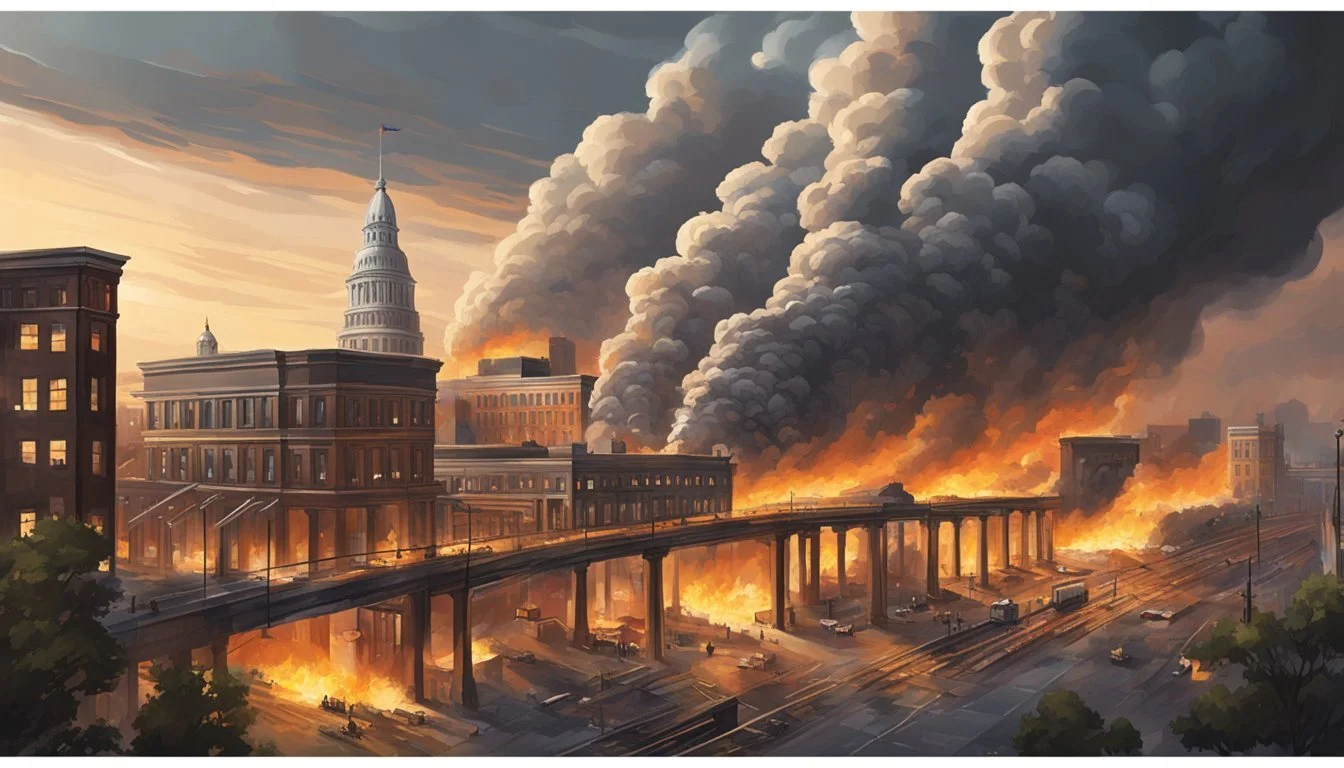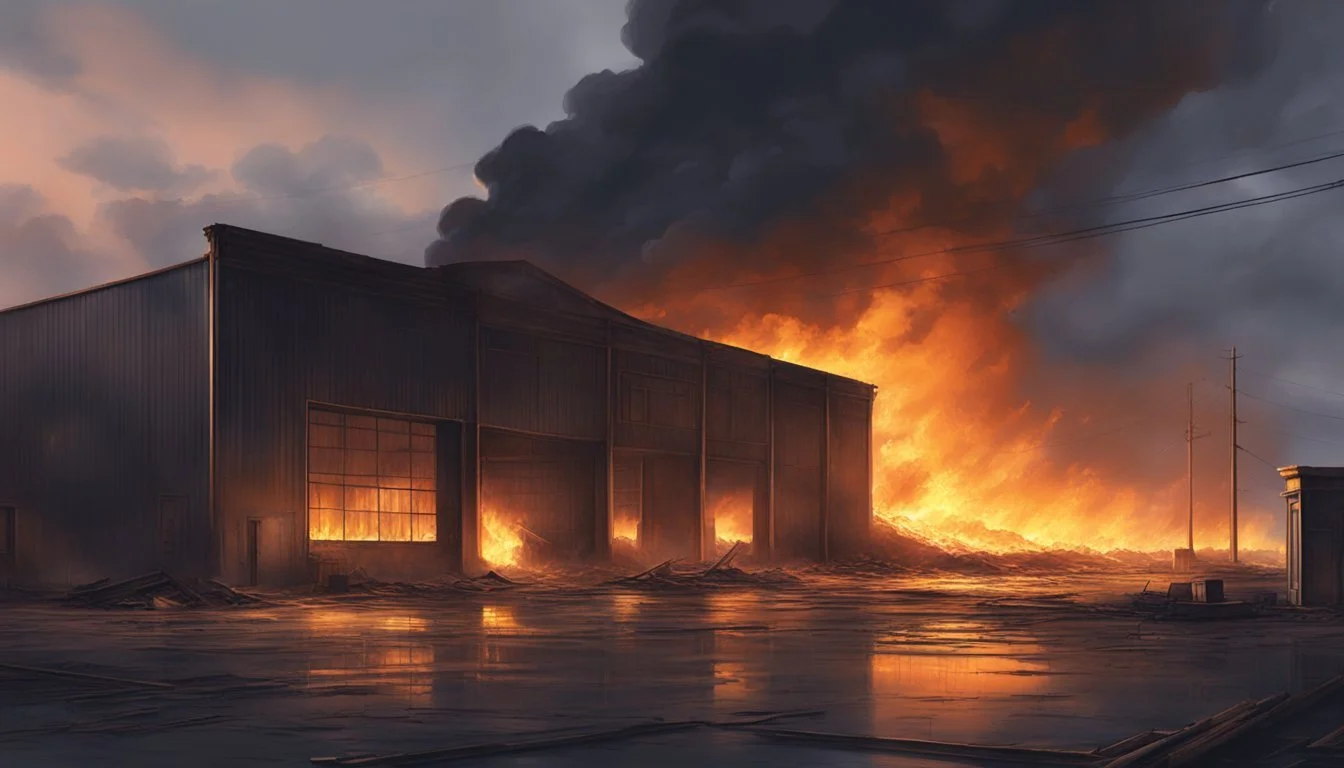Anthony Kirkland: 5 Devastating Fires Set by Cincinnati's Serial Arsonist
A Timeline of Terror
Anthony Kirkland's crimes sent shockwaves through Cincinnati, Ohio in the late 2000s. The serial killer's actions devastated families and left a community grappling with the aftermath of his heinous acts. Kirkland's signature method of using fire to destroy evidence and inflict further harm on his victims added a chilling dimension to his crimes.
Born in 1968, Kirkland's criminal history spans decades, culminating in a series of murders that occurred between 1987 and 2009. His case garnered significant media attention and legal scrutiny, leading to multiple trials and appeals. The story of Anthony Kirkland serves as a stark reminder of the devastating impact of violent crime on individuals, families, and entire communities.
1) The Fourth of July Inferno
Anthony Kirkland's arson spree reached a devastating peak on July 4, 2006. As Cincinnati residents gathered to celebrate Independence Day, Kirkland set fire to an abandoned building in the heart of the city.
The blaze quickly spread to neighboring structures, engulfing an entire city block. Firefighters battled the inferno for hours as it threatened nearby homes and businesses.
The intense heat and thick smoke posed significant challenges for emergency responders. Several firefighters suffered injuries while working to contain the blaze and evacuate nearby residents.
The fire caused millions of dollars in property damage and left dozens of families displaced. It marked one of the largest and most destructive arsons in Cincinnati's history.
Investigators later linked the Fourth of July inferno to Kirkland through physical evidence and witness statements. This fire became a key piece of evidence in building the case against him as a serial arsonist.
2) The Abandoned Warehouse Blaze
Anthony Kirkland's arson spree included a devastating fire at an abandoned warehouse in Cincinnati. The blaze occurred on a chilly autumn night in 2006, lighting up the sky for miles around.
Firefighters responded to reports of smoke billowing from the derelict structure on the city's east side. Upon arrival, they found the warehouse fully engulfed in flames.
The intense heat and size of the fire made it challenging to contain. Crews worked tirelessly through the night to prevent it from spreading to nearby buildings.
Investigators later determined the fire had been deliberately set. Evidence pointed to Kirkland as the perpetrator, matching his pattern of targeting vacant properties.
The warehouse fire caused significant property damage and strained city resources. It also endangered the lives of firefighters and residents in the surrounding area.
This incident highlighted the serious threat posed by serial arsonists like Kirkland. It demonstrated how a single act of fire-setting could have far-reaching consequences for an entire community.
3) The Historic Church Fire
Anthony Kirkland's arson spree included a devastating attack on a beloved Cincinnati landmark. In the early hours of a cold winter morning, flames engulfed the 19th-century St. Mary's Catholic Church.
The fire quickly spread through the wooden interior, consuming priceless artifacts and irreplaceable historical documents. Firefighters battled the blaze for hours, but much of the structure was destroyed.
Community members watched in horror as the church's iconic steeple collapsed. The loss of this architectural gem sent shockwaves through the neighborhood and beyond.
Investigators soon linked the church fire to Kirkland's pattern of arson. Evidence at the scene matched his methods, including the use of accelerants to ensure maximum damage.
The destruction of St. Mary's marked a turning point in the case against Kirkland. Public outrage intensified, and law enforcement redoubled their efforts to apprehend him.
This act of arson stood out among Kirkland's crimes due to its scale and cultural impact. The loss of the historic church was felt deeply by Cincinnati residents for years to come.
4) The High School Gymnasium Arson
Anthony Kirkland's arson spree extended beyond residential targets to include public buildings. One of his most destructive acts involved setting fire to a local high school gymnasium.
The incident occurred late at night when the school was empty. Kirkland broke into the facility and used accelerants to ignite the blaze in multiple locations throughout the gym.
The fire spread rapidly, engulfing the wooden floors and bleachers. By the time firefighters arrived on scene, the gymnasium was fully ablaze. Despite their efforts, the structure suffered extensive damage.
The arson caused significant disruption to school activities and sports programs. Repairs and rebuilding took months, impacting students and the community. The financial toll of the fire reached into the hundreds of thousands of dollars.
This brazen attack on a community institution demonstrated Kirkland's escalating destructive behavior. It also highlighted his disregard for public safety and property.
5) The Riverfront Park Flames
Anthony Kirkland's arson spree extended to Cincinnati's popular Riverfront Park in 2006. On a warm summer evening, park visitors suddenly noticed smoke and flames erupting near the riverbank.
The fire quickly spread through dry grass and vegetation, endangering nearby structures and park facilities. Emergency responders rushed to the scene as panicked visitors evacuated the area.
Firefighters battled the blaze for hours before bringing it under control. The flames caused significant damage to park grounds and equipment, leaving scorch marks visible for months afterward.
Investigators found evidence linking the Riverfront Park fire to Kirkland's signature arson methods. This incident stood out due to its high-profile location and potential for widespread harm.
The park fire heightened public fear and put additional pressure on law enforcement to apprehend the serial arsonist. It marked another escalation in Kirkland's pattern of destructive behavior across Cincinnati.
Profile of Anthony Kirkland
Anthony Kirkland, born on September 13, 1968, became one of Cincinnati's most notorious serial killers. His crimes shocked the community and left a trail of devastation in their wake.
Background and History
Kirkland grew up in Cincinnati, Ohio. Limited information is available about his early life and family background. In 1987, at age 18, he committed his first known violent offense - the killing of Leola Douglas.
Firefighters discovered Douglas's body still burning after Kirkland set her on fire. He pleaded guilty to voluntary manslaughter for this crime and could have faced up to 25 years in prison.
This early incident foreshadowed Kirkland's future pattern of violence and arson. After serving time for Douglas's death, he was released back into society.
Criminal Activities
Kirkland's criminal activities escalated dramatically in the years following his initial imprisonment. He was ultimately convicted or admitted involvement in the deaths of five women and girls.
His victims included:
Casonya Crawford, age 14
Esme Kenney, age 13
At least three other women
Kirkland frequently used fire to attempt to destroy evidence of his crimes. This consistent use of arson became a signature element of his modus operandi as a serial killer.
In 2010, Kirkland received a death sentence for the murders of Crawford and Kenney. However, Ohio's Supreme Court later overturned this sentence on procedural grounds.
Timeline of Arson Attacks
Anthony Kirkland's arson attacks in Cincinnati followed a disturbing pattern of escalation. His crimes left a trail of destruction and terror across the city, with devastating consequences for victims and the community.
Key Incidents
Kirkland's arson spree began in the late 1980s. In 1987, he killed his girlfriend Leola Douglas and set her body on fire. This crime resulted in a 16-year prison sentence.
Upon release in 2003, Kirkland resumed his violent behavior. Between 2006 and 2009, he committed a series of murders accompanied by arson:
May 2006: Killed Casonya Crawford, 45
June 2006: Murdered Mary Jo Newton, 45
May 2008: Killed Kimya Rolison, 25
March 2009: Murdered Esme Kenney, 13
In each case, Kirkland attempted to conceal evidence by burning the victims' bodies.
Impact on Cincinnati Community
Kirkland's crimes created widespread fear in Cincinnati. Residents were on edge, especially after the murder of 13-year-old Esme Kenney.
The attacks strained local law enforcement resources. Police increased patrols and launched extensive investigations to catch the perpetrator.
Victims' families suffered immense grief and trauma. Support groups formed to help those affected by the crimes.
The case prompted discussions about public safety and criminal rehabilitation. It led to calls for improved monitoring of released offenders and better protection for vulnerable citizens.
Legal Proceedings
Anthony Kirkland faced severe legal consequences for his crimes. The judicial process involved multiple phases as authorities worked to bring him to justice for the murders he committed.
Arrest and Charges
Kirkland was arrested in March 2009 after the body of 13-year-old Esme Kenney was discovered. Police quickly linked him to her disappearance and death. Investigators soon connected Kirkland to other unsolved murders in the Cincinnati area.
He was charged with multiple counts of aggravated murder, gross abuse of a corpse, and attempted rape. The charges stemmed from the deaths of Esme Kenney, Casonya Crawford, Mary Jo Newton, and Kimya Rolison.
Prosecutors sought the death penalty due to the severity and number of crimes.
Trial and Sentencing
Kirkland's trial began in 2010. The prosecution presented DNA evidence and Kirkland's own confessions to build their case. After deliberations, the jury found Kirkland guilty on all counts.
In the sentencing phase, jurors recommended the death penalty. The judge agreed, sentencing Kirkland to death for the murders of Esme Kenney and Casonya Crawford.
In 2016, the Ohio Supreme Court ordered a new sentencing hearing due to prosecutorial misconduct. At the 2018 resentencing, another jury again recommended death. The judge upheld this decision, sending Kirkland back to death row.
The Ohio Supreme Court later affirmed Kirkland's death sentence upon review.








